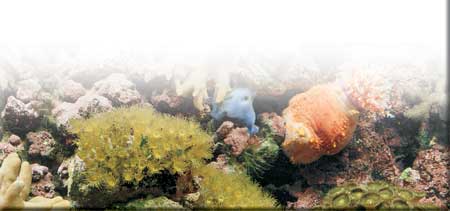
|
How to evaluate and select lighting needs Marine aquariums, which are intended for the keeping of photosynthetic corals and invertebrates, require serious consideration and understanding when the issue of lighting is addressed. Quality, intense, full-spectrum lighting is essential. This can be achieved by combining multiple Fluorescent GLO Bulbs.
The chlorophyll found in various algae, invertebrates and corals require exposure to specific wavelengths of light for proper function. These chlorophyll are essential for the basic survival and growth of many species of coral, invertebrates and algae commonly kept in marine aquariums. In general, it is the blue spectrum that is important for various chlorophyll to function. Light wavelength absorption by water is another critical factor for marine aquarium lighting. Blue light, which represents the dominant wavelength in the aquatic environment, penetrates to depths of hundreds of feet. Red light is almost totally absorbed by water within the first 16 feet. Sunlight present over tropical reefs is extremely intense (high lux values). In comparison to calm waters, waves and turbulent conditions can reduce light penetration due to reflection. How much light does my aquarium require? The quantity of light required for marine aquariums will vary depending on the life forms kept. In fish-only setups, 2 Watts per gallon is sufficient. Reef-type systems containing primarily soft corals should have a ratio of 2 to 4 Watts per gallon. A deduction of 15% to 20% of the rated tank volume is permissible to account for water displacement due to live rock formations.
Reef systems containing species of hard corals need a minimum of 4 Watts of light per gallon. It is often impossible to determine the origin (which ocean, the depth and surroundings) of a coral or an invertebrate. Even hard corals, requiring more intense lighting, have been found in lower light conditions. Knowing a coral or invertebrate’s origin would allow simulating lighting requirements more accurately, however, only general guidelines can be followed. If a coral is not responding in its present location, it is recommended to place it in a different area of the aquarium where the lighting conditions and water movement may be more suitable. |
